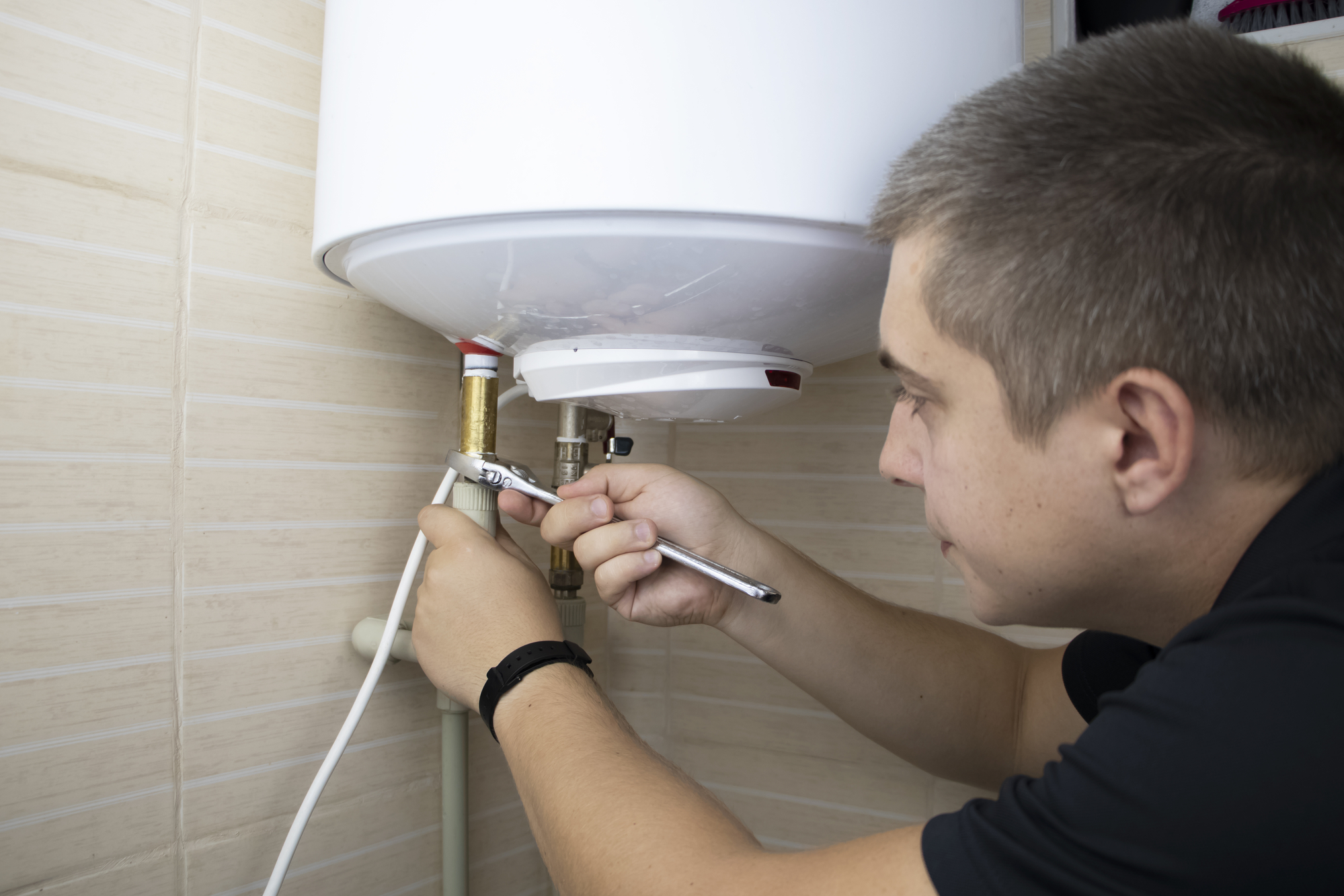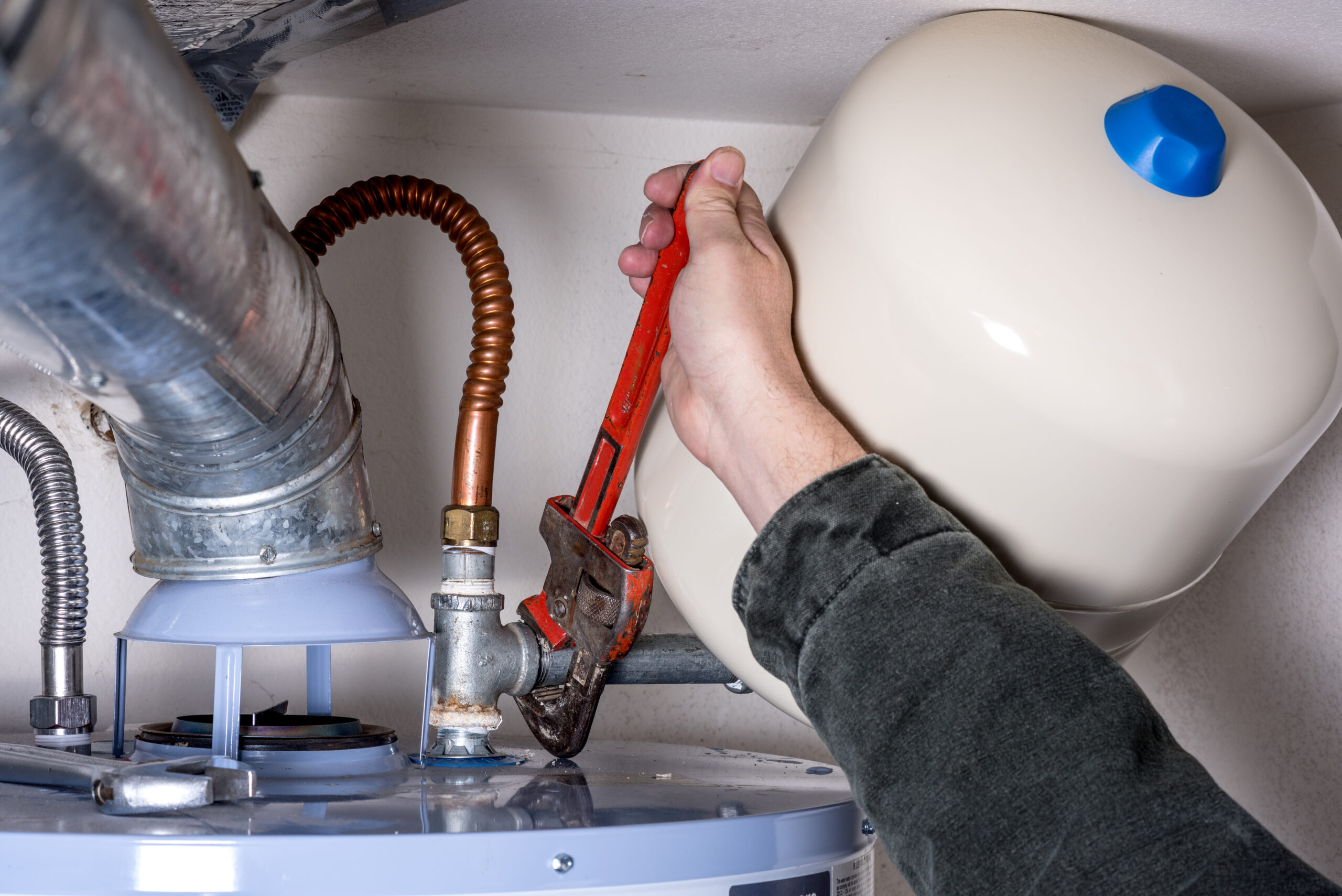Affordable Plumbing Engineers for Water Heaters
Seattle Water Heaters
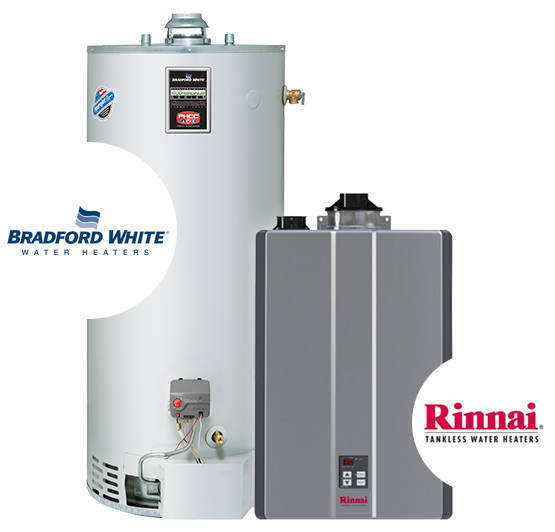
Troubleshooting Your Water Heater
Want to replace your tankless water heater in Seattle? Our Seattle tankless water heater installation service is available when you require a new water heater or your outdated one needs to be replaced. Any tankless water heater can be installed by us, and we’ll make sure it’s done properly and professionally.
We evaluate your requirements to identify the ideal water heater for your home as the first stage in our installation process. We’ll consider your home’s size, the number of occupants, how much water you use, and any other relevant factors when determining which water heater is best for you.
After determining the ideal water heater, we’ll thoroughly check your home’s plumbing to ensure everything is in working order. This is crucial since installing a tankless water heater can be trickier than installing the conventional tank water heater.
We’ll start working on installing your new water heater once the plumbing in your home has been examined. To make sure your water heater is installed correctly and securely, we’ll adhere to all manufacturer guidelines.
We’ll test your new water heater after installation to make sure it’s functioning properly. We’ll also show you how to use it and take care of it so that it works well for many years to come.
Call our staff at Seattle Water Heaters right now if you live in the Seattle region and require assistance installing a tankless water heater. We can assist you in finding and installing the ideal water heater for your residence or place of business.
What Are the Common Issues with Water Heaters?
One of the most important appliances in your house is the water heater. The truth is that you depend on the hot water almost every day, even though it may not always be obvious. Thus, even little issues have the potential to create a significant disturbance. A water heater problem can essentially put an end to your daily life at home because you rely on hot water for everything from bathing to cooking to cleaning to using other appliances.
Therefore, it’s crucial that you understand some of the most significant and typical causes of water heater failure. Your ability to correctly diagnose these water heater problems and then take the necessary action will increase as you gain more knowledge about them. Here are some of the most typical problems with water heaters, their causes, and what you can do to fix them and get your hot water back.
-
Odd-smelling hot water
If you smell something odd when you turn on the hot water, there’s a chance that germs have accumulated in your tank. Any germs in the tank should start to disappear after the temperature is raised to around 140 degrees Fahrenheit. However, be careful not to use your hot water while this service is running because naked skin exposure to that kind of hot water could result in significant burns. Turn up the heat for approximately an hour, then turn it back down and wait several hours for the temperature to drop before using any hot water. You might need to get your tank cleaned with a chlorine bleach solution if the issue persists.
-
No hot water
Despite having a tank full of water, none of it appears to be warm. Your heat source may be the source of this problem. This implies that your electric water heater’s heating elements may have malfunctioned or their electrical connection may have been hampered. This could be an issue with the gas connection or the pilot light if it is a gas water heater. If the gas doesn’t ignite when the pilot light is lit, there may be a problem with your burner as a whole that has to be fixed. Check your breaker box to determine whether the circuit your water heater is on has tripped if your heater is more recent and has an electronic ignition system. If so, simply reset it to get your water heater working again.
-
Water leaks
The most typical problem with a water heater is probably water leakage. Any water heater will ultimately begin to leak because water will corrode your tank over time and cause tiny cracks or fractures. However, this does not necessarily mean that the leak is coming from your tank. Your water connections can be loose if the leak appears to be coming from the top of your tank. Verify that your hot water exit pipes and cold water inlet pipes are both firmly connected and are not rattling or otherwise loose.
If the leak looks to be coming from the bottom, condensation may be the problem. It can be fixed by raising the thermostat. Additionally, your overflow line or pressure relief valve may be leaking water. However, this can also be an indication of tank corrosion, in which case you should replace your water heater right away.
-
Too hot or too cold water
Are the water temps in your heater fluctuating? No matter how you set the thermostat, does the water get too hot or not hot enough? This indicates that there are issues with your thermostat. To get your thermocouple sensing temperatures effectively once more, it might need to be cleaned or replaced. However, too cold water could be a sign of a problem with gas flow. Your burner won’t be able to sufficiently heat the water in your tank if your gas flow is restricted or insufficient for your demands.
-
Reheating the tank takes forever
If it seems like your water heater takes an excessively long time to heat water, you might be experiencing one of several other issues. It’s possible that your thermostat is set too low, in which case your burner isn’t producing enough energy to heat your water effectively. You might also have an issue with your gas connection, such as low gas pressure, an unclean vent flue, or an unclean burner orifice that obstructs appropriate gas flow. Your issue might be resolved by cleaning these components.
A water heater not having adequate capacity to serve a household is, however, often the cause of a water heater taking too long to reheat. Lukewarm water flows through the lines because the water heater has emptied itself out and never has a chance to fully replenish and reheat before being called upon again. This makes it appear as if your water heater cannot heat up again, when in fact it simply hasn’t had enough time (and is working based on its capacity).
-
Low hot water pressure
The smaller, 12″ plumbing that was the building standard for decades is the main factor in older homes limiting water pressure. Modern homes have larger 3/4″ plumbing that can handle more water flow. An older home’s sole option for resolving this problem is a complete repipe. That’s no easy task, either.
However, if your home has modern plumbing, you might be able to improve your water pressure by checking to see whether your sink’s aerators are clogged (which they do over time). Check your water inlet valve as well to make sure it hasn’t partially closed by accident.
Troubleshooting an Electric Water Heater
You don’t always need to call in the professionals or pay for a replacement water heater straight away if your water heater breaks down. Depending on the issue, DIY electric water heater repair may be a possibility. To diagnose your water heater issue, though, you’ll need to have some basic understanding of electric water heaters.
Electric water heaters resemble their gas-powered cousins in appearance. Both of them employ a steel storage tank jacket with insulation between the tank jacket and the storage tank to lessen heat loss of the heated water. The heat source is the primary distinction between gas and electric water heaters. Electric upper and lower heating components that extend into the water tank heat the water in an electric water heater. Gas burners are used in gas water heaters to heat the water from below the tank.
Failure of the heating element, which results in little or no heat generation, is one of the most frequent issues with electric water heaters. Fortunately, it’s a cheap component that requires only a little knowledge of DIY water heater repair. Other frequent issues include improper settings, high water pressure in the house, and issues resulting from lack of tank maintenance. These could all potentially make your hot water heater stop working.
If you’re thinking about doing your own electric water heater repair, here are seven typical issues and potential solutions.
-
Check the warranty before you begin
Look up the warranty on the electric water heater before you begin troubleshooting it. Water heaters are sold with a limited warranty for both home and commercial use. A rating plate with the model and serial number is located on each tank. If the tank has a prorated warranty that could provide a replacement tank or parts, either free of charge or at a discount, it will be determined by these numbers, which indicate the year the tank was manufactured.
If there are any indications that your water heater is malfunctioning, take a picture or note down the information and contact the manufacturer. But take note that site labor is often not covered by manufacturer warranties.
-
Water leaks
Water leaks can also be related to tank issues; however, they are typically brought on by failing valves and plumbing connections. Water leaks can significantly damage a house, so it’s crucial to stop them as soon as they occur.
How to repair
Loose heating elements or tank corrosion could be responsible for water heater tank leaks. Check the elements for slackness and, if necessary, use an element wrench to tighten them.
A rusted tank needs to be replaced because it cannot be fixed. Turn off the water heater’s electricity and water supply before entirely draining the tank to stop leaks.
-
Insufficient hot water
Your unit may be too small to supply the hot water needs of the home if your water heater is producing hot water, but just not enough of it. Make sure the demand is within the water heater’s capability.
How to repair
75 percent of the hot water capacity of a water heater should be available. A 40-gallon water heater, for example, is appropriately sized for a hot water demand of 30 gallons. Try to shorten showers, install low-flow showerheads, and spread-out dishwashing and laundry to different times of the day rather than doing them all at once if demand exceeds the heater’s capacity.
If your water heater is not undersized but suddenly produces less hot water than it did before, one or both of its heating elements may have failed and needs to be replaced. When the water in the shower is consistently lukewarm, there is likely a problem with the upper heating element. When the hot water in the shower runs out quickly, the lower heating element is likely broken.
-
No hot water
It’s possible that a water heater isn’t getting electricity, that a limit switch has tripped, or that one or more heating components have failed.
How to repair
First, make sure the circuit breaker for the water heater in the service panel hasn’t tripped. Switch the breaker back on and off if it has tripped.
Reset the heater’s high-temperature limit if the breaker did not trip or if it is still on:
- In the service panel, turn off the breaker for the water heater’s circuit.
- On the water heater, remove the access panel to the upper heating element.
- Without touching any wires or electrical terminals, remove the insulation and the plastic safety shield.
- Located above the upper thermostat, press the red high-temperature cutoff reset button.
- The access panel, insulation, and safety guard should be replaced.
- Turn on the circuit breaker for the heater.
- If that doesn’t work, check each heating element and replace them if necessary.
-
Water is too hot
Nearly as frustrating as having too little hot water is having water that is too hot. The thermostats on your water heater may be set too high if you are having this issue.
How to repair
To check the thermostat settings, follow these steps:
- In the service panel, switch off the electricity to the water heater.
- Each heating element on the water heater should have its insulation, plastic safety guard, and access panel removed. Never touch any electrical terminals or cables.
- With the aid of a non-contact voltage tester, check the wires to ensure the power is off.
- Check the temperature setting on both thermostats; they should be the same. The recommended temperature is about 120 degrees Fahrenheit.
- Use a flathead screwdriver to set the temperature to the desired level.
- The other thermostat should be set to the same temperature.
- Replace each element’s safety guard, insulation, and access panel.
- Turn on the circuit breaker for the heater.
-
Tank noises
Is your electric water heater making any noises? Is there a low rumbling or popping sound? Or, might it be a loud whine? It’s possible that the sounds you’re hearing are the sounds of boiling water. Excessive sediment accumulation in the tank’s bottom might cause it to overheat, thereby causing the water to boil.
Ways to repair
Draining the tank to remove the silt is the first thing to attempt. You might need to have the tank replaced if that doesn’t work.
-
Rusty water or a bad smell
If the water coming from your faucet has a brown, yellow, or red color, corrosion may be taking place inside your water heater tank or in your home’s pipes. In a similar vein, bacteria in the hot water heater tank may be the cause of water that smells like rotten eggs.
Ways to repair
The anode rod in the tank may need to be replaced, which normally calls for the services of a qualified plumber.
Troubleshooting a Gas Water Heater
A popular type of heater that might be a fantastic choice for many households is the gas water heater. Gas water heaters can, however, occasionally experience issues much like any other appliance. Use this troubleshooting guide to help identify the issue and resolve it if your gas water heater isn’t functioning properly.
There are a few things you can try to fix your gas water heater if it isn’t operating properly. To begin with, confirm that the pilot light is on. If it isn’t, try relighting it as directed by the manufacturer. The thermocouple may be at fault if the pilot light won’t remain lit. This safety device turns off the gas if the pilot light fails. The thermocouple must be changed if it is indeed the problem.
The gas supply could be the issue if the pilot light is lighted but the water heater is still not operating. Verify that the gas valve is switched on and that the gas line is clear of obstructions.
The thermostat may be adjusted too low if the water heater is still not functioning. Increase the thermostat and give the water heater a few hours to start working before checking again.
You’ll need to contact a plumber or water heater repair specialist if none of these troubleshooting techniques manages to fix the issue.
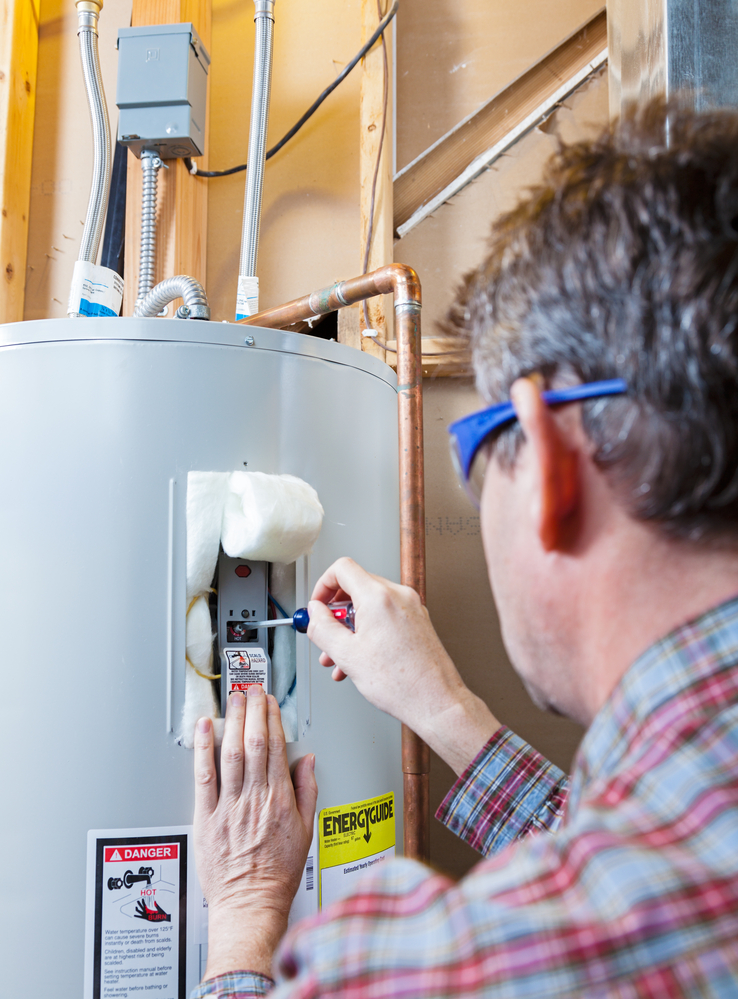
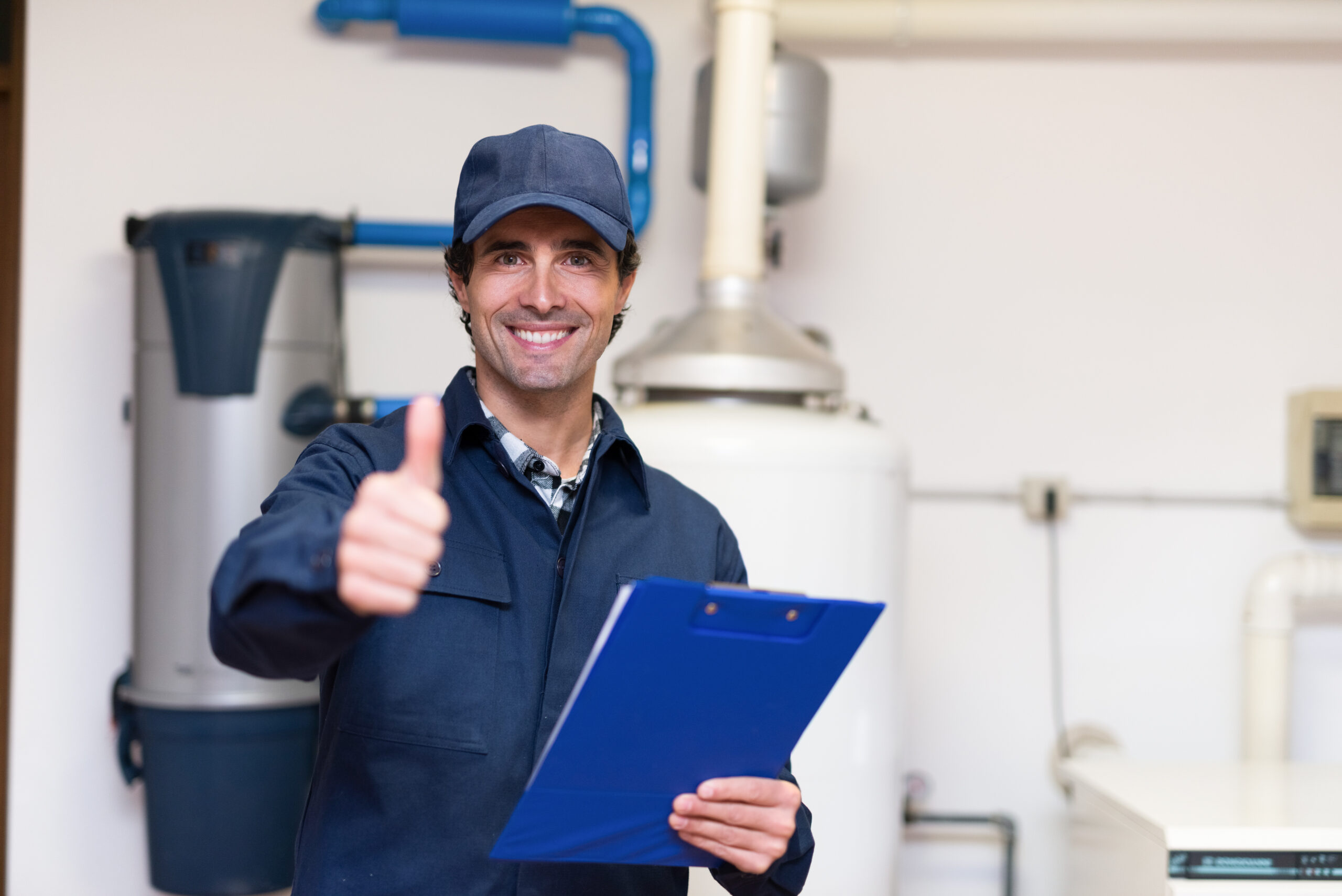
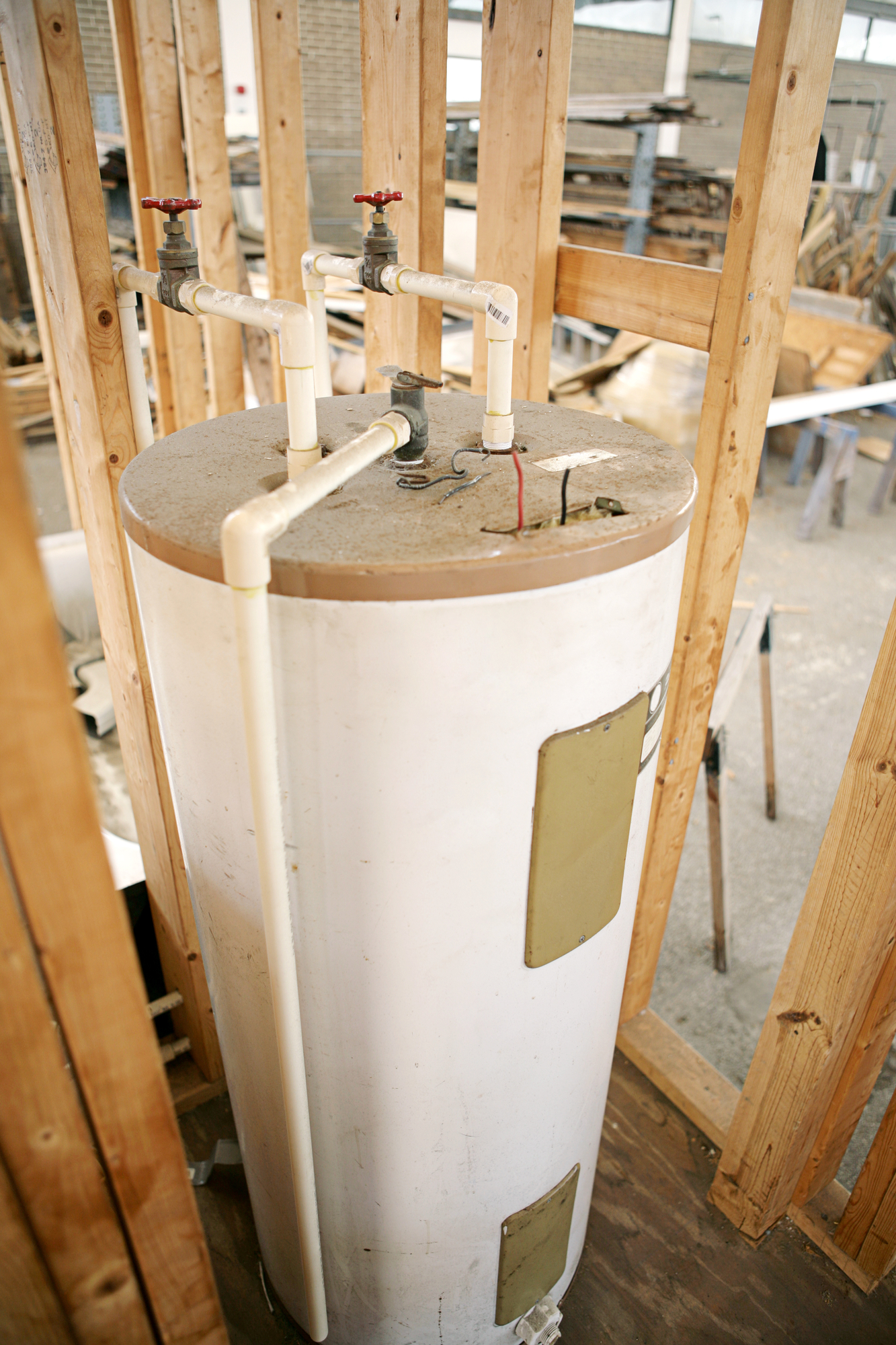
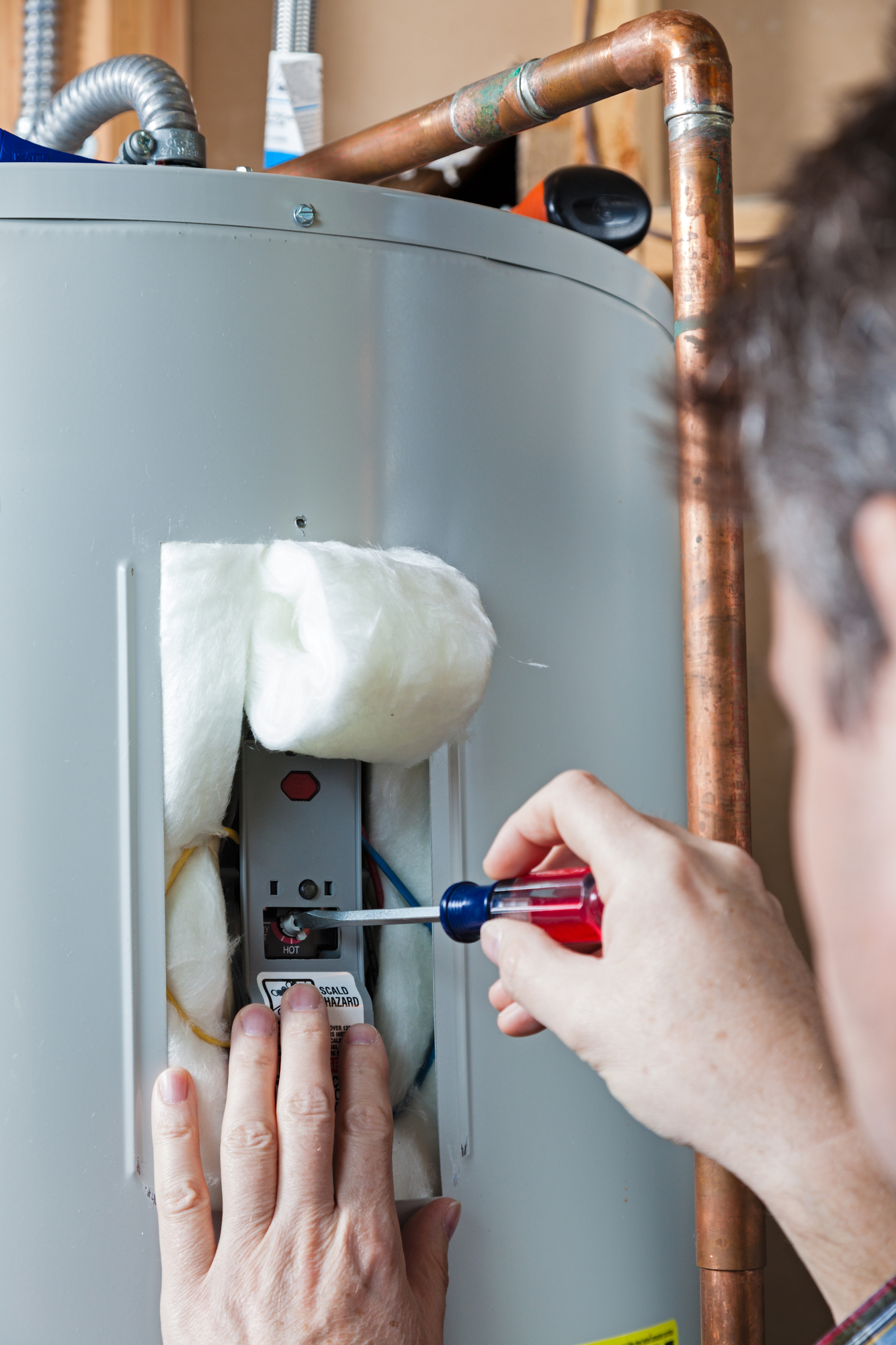


Troubleshooting Tank Water Heaters
Before you begin any troubleshooting, be careful to switch off the tank heater. In the case of electric models, this entails turning off the heater at the service panel before checking with a non-contact voltage tester to make sure there is no electrical current. For gas models, simply setting the thermostat to “off” is sufficient.
-
Water spills
The most typical reasons for leaks are:
- Drainage valve — Ensure that the valve is properly closed. If that is ineffective, change the valve.
- The ball valve — Tighten the nut holding the handle in place.
- Loose connection or stripped threaded nipple — If the leak comes from the top of the heater and neither of the aforementioned factors is to blame, the most likely culprit is a loose connection or a stripped threaded needle.
- Tank — The heater must be completely replaced if there is a leak from the bottom that is not caused by any of the aforementioned factors.
- Pressure relief valve — To stop the leak, replace the valve.
- Condensation — Turn the heater off for a while. If that resolves the issue, reduce the thermostat temperature.
-
Not enough hot water
A water heater may be providing insufficient or no hot water for a number of causes, including:
- The thermostat — Low thermostat temperatures are frequently to blame for water not being hard enough.
- High-temperature limit — Press the reset button for the high-temperature cutoff.
- Heating components — If the aforementioned steps are ineffective, test each heating element by contacting the screws with a tester probe.
- Dip tube — Drain the tank, then install a new dip tube.
- Circuit breaker — Ensure that the breaker is not tripped.
- Small-sized tank — To determine whether a more powerful heater is required, homeowners should check if their water needs have increased.
In the case of a gas water heater, also look at the following:
- The thermocouple — It could need to be cleaned or replaced.
- The pilot light — It could have gone out.
-
Water too hot
Some homeowners do not know that they ought to change the thermostat on their water heaters in the summer to prevent the water from getting excessively hot. If the thermostats are found to be already set to the appropriate temperature, they may be defective; check for continuity using a multimeter.
-
Slow water heating
If an electric heater is operating more slowly than usual, the heating elements (check with a testing probe) or thermostats (check with a multimeter) are likely to be at fault.
In the case of a gas water heater, check that the heater is set to the proper gas pressure. Clean the burner orifices if this doesn’t work.
-
Dirty water
Water that is filthy, rusty, or stinky indicates that the heater’s anode rod needs to be replaced. Do this, then flush the tank.
-
A noisy water heater
Check for leaks and inspect the pressure valve. Clean the heater if these are good.
-
Low flow
A decrease in water pressure typically indicates that the heater needs to be cleaned. Additionally, upgrading from 1/2-inch galvanizing piping to 3/4-inch piping might be necessary.
-
Burner and pilot light issues
Inspecting a gas tank water heater, you might notice issues with the burner or pilot light:
- Burner failing — Lower and raise the temperature while running hot water. If this doesn’t work, the thermocouple, burner orifices, or vent are the possible culprits.
- Pilot light won’t light — The failure of the pilot light to ignite could be caused by a variety of problems. The gas utility company for the home normally offers free servicing.
- Pilot light going out — Use a multimeter to test the thermocouple and make sure the gas valves are functioning properly. Unclog the vent if neither of these is the issue.
Troubleshooting a Tankless Water Heaters
Tankless water heaters, whether gas or electric, are less prone to issues than tank water heaters, although problems can still happen. Before you begin troubleshooting, switch off the heater using the same methods described above.
-
Not enough hot water
Due to a damaged heating element, electric tankless heaters may stop producing hot water. Drain the heater, take off the cover, and unplug the wires to replace the element.
The issue with a gas tankless heater is typically an obstruction in the vent or a gas valve that has been switched off.
Finally, tankless heaters can only produce a certain volume of hot water at a time, just like tank heaters can. Electric heaters, which work best as point-of-use appliances and in small households, are more prone to this issue. The homeowner will need to replace their heater with a larger one or buy an additional one.
-
Overheated water
Tankless heaters can produce water that is excessively hot due to a malfunctioning temperature sensor, in addition to a thermostat that is set too high or that is defective. To determine whether the sensor has to be repositioned or is broken, use a multimeter.
-
A water heater shutdown
A heater may shut down if the demand for water becomes too much. Simply reset it.
-
Mineral accumulation
Tankless water heaters require cleaning at least once a year to prevent mineral build-up (twice a year in areas with hard water).
-
Cold-water sandwich
A cold-water sandwich can’t be fixed, sadly. Some models have this issue, while others do not. This occurs when cold water is released, followed by a brief burst of hot water, before the water is released cold once more (thus the sandwich reference).
-
Failure of the flame to ignite
Tankless gas heaters that encounter ignition issues frequently display an error message. Verify the valves are open, and if there is a gas tank, make sure it is filled with fuel. Blocked venting is typically the cause of flame failures.
-
Air supply or exhaust blockage
Gas tankless heaters also experience issues with air supply and exhaust. Clear away any obvious obstructions and make sure the heater is spaced properly.
While the aforementioned problems would typically be what you will encounter while troubleshooting water heaters, sometimes the problems are more complicated. In other situations, the owner just has to upgrade because the water heater has reached the end of its useful life.

Why It's Recommended to Always Call a Professional When Your Water Heater Has a Problem
When your water heater breaks down, it’s usually better to hire a professional plumber for a variety of reasons. One reason is that plumbers are qualified and experienced to identify the issue. They will also have the necessary tools and machinery to resolve the problem.
A professional can also assist in preventing further damage to your house, which is another incentive to hire them. If you try to solve the issue on your own, you can wind up doing more harm than good. In the long run, this can end up costing you more money.
Finally, experts can provide guidance on how to maintain the functionality of your water heater. They can advise you on the right kind of maintenance to do at the right time. This can help your water heater last longer and avert difficulties in the future.
Water Heater Repair: DIY
It’s time to consider repairing or replacing your water heater if it isn’t functioning as well as it once did or if it has completely stopped operating. You might be able to make a DIY fix depending on the issue.
Turning off the unit’s power and water supply is the first thing you should do if your water heater is leaking. Check the tank again to see if there is any obvious damage. The tank must be replaced if it has a hole or crack in it.
You might be able to replace the heating element yourself if that is the issue. Determine the sort of heating element you currently have before going to a home improvement store to get a replacement. When installing the new part, make sure to carefully follow the directions.
A replacement thermostat may typically be found at a home improvement store if the thermostat is the issue. When changing the thermostat, be sure to carefully follow the installation instructions.
A clogged sediment trap may be responsible for your water heater’s ineffective water heating. Turn off the unit’s power and water supply before removing the sediment trap cover to clean the trap. To remove any debris that might be obstructing water flow, use a garden hose. Replace the lid and turn on the power and water supplies after the trap has been cleared.
After attempting a DIY repair, if your water heater is still not operating properly, you might need to contact a professional. An experienced professional will be able to identify the issue and suggest the best line of action. They might also have advice on how to keep your water heater from developing further issues in the future.
You might be driven to handle issues on your own when your water heater starts to malfunction rather than calling a professional who can fix the water heater. While there are procedures you can safely follow to solve a water heater issue, there are some circumstances that are best handled by a qualified expert. If ever in doubt, call our professionals at Seattle Water Heaters.
